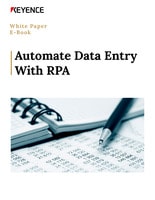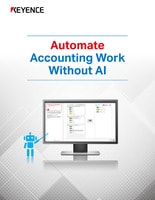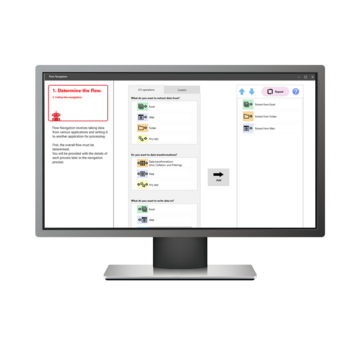RPA (Robotic Process Automation)
Operations Department Automation with RPA

In any organization, the operations department is responsible for ensuring that day-to-day tasks run smoothly. From managing workflows to processing orders, managing inventories, and ensuring effective communication between departments, operational tasks are often repetitive and time-consuming. Robotic Process Automation (RPA) offers a way to significantly enhance efficiency by automating these repetitive tasks, allowing teams to focus on more strategic goals.
By implementing RPA in the operations department, businesses can automate tasks such as order processing, inventory management, data entry, invoicing, and reporting. This not only speeds up processes but also ensures accuracy and consistency across workflows, ultimately improving service delivery and customer satisfaction.
Discover more about this product.
Click here to book your demo.

Common Operational Challenges
Manual Order Processing
Processing orders manually can lead to delays, errors, and inconsistent service. RPA can streamline order processing by automatically capturing order details from various systems and inputting them into the order management system. It can also trigger actions such as order confirmations, inventory checks, and shipment scheduling, all without human intervention.
Inventory Management and Stock Replenishment
Keeping track of inventory levels, stock movements, and replenishing supplies manually is both time-consuming and error-prone. RPA can automate the tracking of inventory levels, initiate stock replenishment requests, and ensure that inventory data is always up-to-date. This minimizes human error and prevents stockouts or overstocking.
Data Entry and Document Processing
Data entry and document processing are some of the most repetitive tasks in operations. RPA can automate the extraction of data from documents such as invoices, purchase orders, and contracts, and input it into enterprise resource planning (ERP) systems or other databases. This not only saves time but also ensures that data is entered accurately.
Manual Reporting
Generating reports, tracking key performance indicators (KPIs), and providing insights into business performance often require manual data aggregation. RPA can automate the process of collecting and consolidating data from various sources, generating reports, and distributing them to stakeholders, providing real-time insights with minimal effort.
Benefits of RPA for Operations Departments
- Increased Speed and Efficiency: Automating repetitive tasks enables the operations team to complete processes faster and with fewer delays.
- Improved Accuracy: RPA reduces human errors associated with manual data entry, inventory management, and order processing, leading to more accurate results.
- Enhanced Visibility: RPA enables real-time tracking and monitoring of operational activities, allowing businesses to make more informed decisions and respond to issues faster.
- Cost Reduction: By automating routine tasks, RPA reduces the need for additional labor and decreases the likelihood of costly errors or inefficiencies.
- Scalability: RPA can scale with business growth, easily handling increased volumes of data and processes without the need for additional resources.
Integrating RPA into Operations
RPA can integrate seamlessly with a wide range of systems, including:
- Enterprise Resource Planning (ERP) Systems
- Customer Relationship Management (CRM) Systems
- Supply Chain Management (SCM) Software
- Order Management Systems (OMS)
- Inventory Management Systems
- Accounting and Finance Software
By integrating RPA with these systems, businesses can automate end-to-end workflows, ensuring smooth and efficient operations across departments.
Designed for Business Users
Unlike traditional automation tools that require scripting or IT involvement, our platform is no-code and intuitive. Users can build and manage their own automations using drag-and-drop logic and built-in recording features. Whether you’re automating simple tasks or complex workflows, you can do it without advanced technical training.
Who Benefits the Most?
- Operations Managers: Automate routine tasks such as data entry, order processing, and inventory management to improve overall efficiency and reduce operational bottlenecks.
- Supply Chain Coordinators: Use RPA to manage inventory levels, track shipments, and ensure that products are delivered on time and at the right cost.
- Finance and Accounting Teams: Automate invoicing, payments, and reporting processes to ensure accurate financial records and streamline financial workflows.
- Customer Service Teams: By automating order processing and customer inquiries, customer service teams can focus on more complex issues and enhance customer satisfaction.
By adopting RPA, operations teams can significantly enhance efficiency, accuracy, and service quality. Automating routine processes allows teams to focus on high-priority tasks, reduce operational costs, and scale operations effortlessly.
FAQs
How Does RPA Help Improve Order Processing?
RPA can automate the entire order processing cycle, from capturing order details to validating them and updating the order management system. This speeds up the process, reduces human errors, and ensures orders are processed quickly and accurately.
Can RPA Be Used for Inventory Management?
Yes, RPA can track inventory levels, monitor stock movements, and trigger stock replenishment orders automatically, ensuring inventory data is always accurate and up-to-date.
How Does RPA Automate Reporting in Operations?
RPA can gather data from multiple systems, compile it, and generate detailed reports, which can be automatically distributed to stakeholders. This eliminates the need for manual report generation and provides real-time insights into business performance.
We’re here to provide you with more details.
Reach out today!

Related Downloads
Related Products
Scroll




